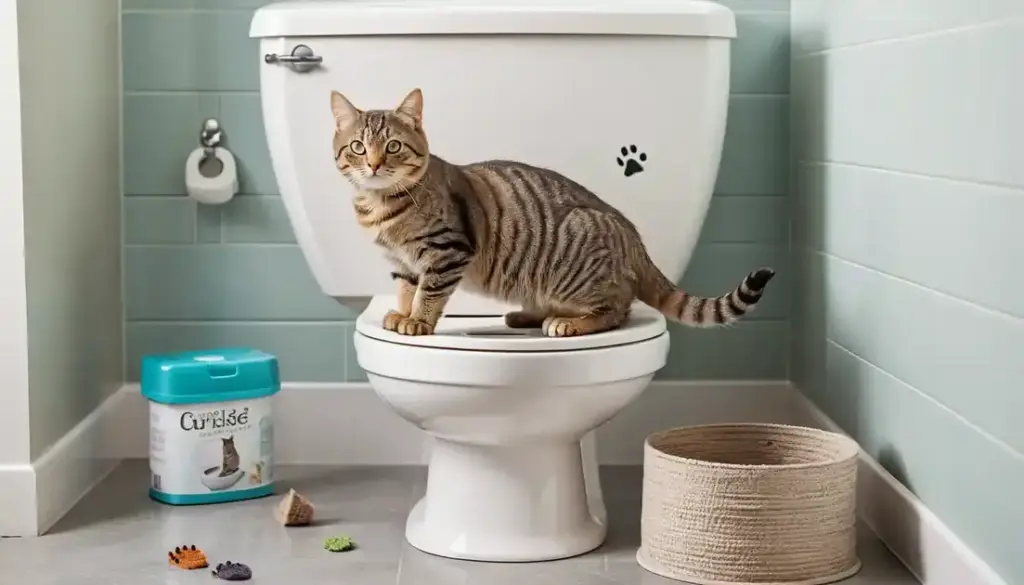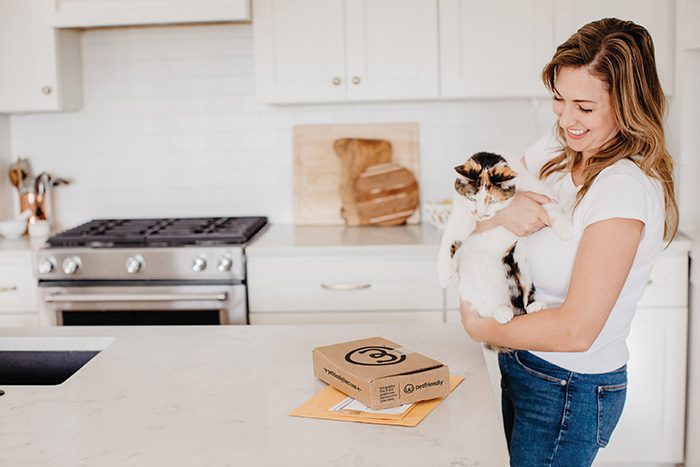Cat toilet training lets your cat use a human toilet instead of a litter box, cutting litter waste, saving money, and reducing daily scooping. It sounds simple, but the method taps into a cat’s instincts and health needs.
Below you’ll learn the main benefits, the biggest risks, and a proven step‑by‑step plan so you can decide whether cat toilet training fits your household.
What Is Cat Toilet Training?
Cat toilet training is the process of teaching a cat to eliminate on a standard bathroom toilet rather than in a litter box. The technique usually involves a gradual transition using a specially designed training seat that starts with litter and slowly removes it as the cat gets comfortable balancing on the toilet.
Key points at a glance
- Goal: Eliminate the need for a traditional litter box.
- Tool: A training kit (e.g., CitiKitty, Litter Kwitter) or a DIY setup.
- Duration: Most cats adapt in 4–6 weeks when the steps are followed correctly.
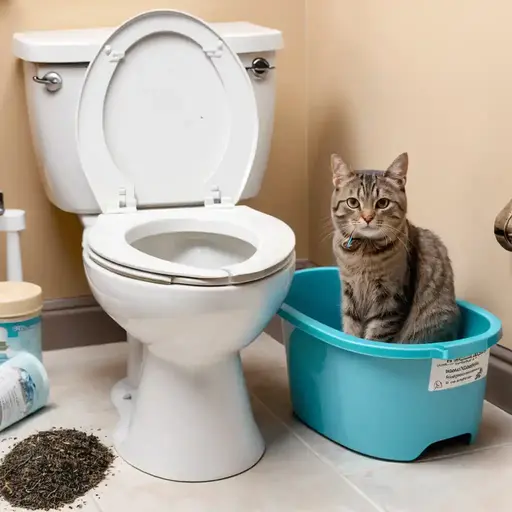
Benefits of Cat Toilet Training
Cat toilet training isn’t just a novelty; it offers tangible advantages for both owners and the environment.
Environmental Impact
- Litter waste reduction: Traditional clay or silica litters add millions of tons of non‑biodegradable material to landfills each year.
- Zero‑waste option: Using a toilet eliminates the need for disposable litter bags and plastic packaging.
Cost Savings
| Expense | Traditional Litter (Yearly) | Cat Toilet Training (Yearly) |
|---|---|---|
| Litter | $150‑$250 | $0 |
| Scooping tools & deodorizers | $20‑$40 | $0 |
| Storage space | 2‑3 sq ft | None |
| Total | ≈ $200‑$300 | ≈ $0 |
Even when you factor in the modest price of a training kit ($30‑$70) and a slight increase in water use, most families break even within a few months.
Convenience
- No daily scooping: Skip the ritual of cleaning a litter box.
- Cleaner home: Without loose litter, there’s less tracking on floors and carpets.
- Odor control: A flushed toilet eliminates lingering smells.
Accessibility for Older Cats
A low‑profile toilet seat can be easier for senior cats or pets with arthritis to step onto than climbing into a tall litter box.
Drawbacks of Cat Toilet Training
Balancing the benefits are a set of real concerns that can affect a cat’s health and behavior.
Health and Safety Risks
- Falls & slips: The smooth porcelain surface can be slippery, especially for kittens, senior cats, or those with mobility issues.
- Drowning hazard: A cat that falls into a flushed bowl can become trapped.
- Pathogen spread: Flushing cat feces may introduce Toxoplasma gondii into water systems, which standard treatment plants don’t always filter.
Behavioral Issues
- Instinct suppression: Cats naturally dig and bury waste to hide their scent. Removing that option can cause stress, leading to scratching, “mock‑burying,” or inappropriate elimination.
- Territorial anxiety: In multi‑cat homes, the exposed toilet can become a contested space, prompting spraying or avoidance.
Monitoring Health Becomes Harder
Veterinarians often rely on visual cues from a litter box (color of urine, consistency of stool, frequency) to spot early signs of kidney disease, diabetes, or urinary tract infections. When a cat flushes waste, those clues disappear, potentially delaying diagnosis.
Initial Investment
A quality training kit costs $30‑$70, and you may need additional items (elevator platforms, non‑slip mats). While cheaper than a high‑end self‑cleaning litter box, it’s still a startup expense.
Is Your Cat a Good Candidate?
Not every feline will thrive with cat toilet training. Use the quick checklist below to gauge suitability.
| Factor | Ideal for Training | Red Flag |
|---|---|---|
| Age | 6 months – 3 years (young, adaptable) | < 6 months (too fragile) or > 10 years (mobility issues) |
| Mobility | Confident climbers, no joint pain | Arthritis, recent surgery, obesity |
| Temperament | Curious, confident, low stress | Shy, anxious, easily frightened |
| Health | No current urinary or gastrointestinal problems | A dominant cat that may intimidate others |
| Household | One cat or well‑managed multi‑cat environment | One cat or a well‑managed multi‑cat environment |
If any red flags appear, consider alternative solutions before committing to cat toilet training.
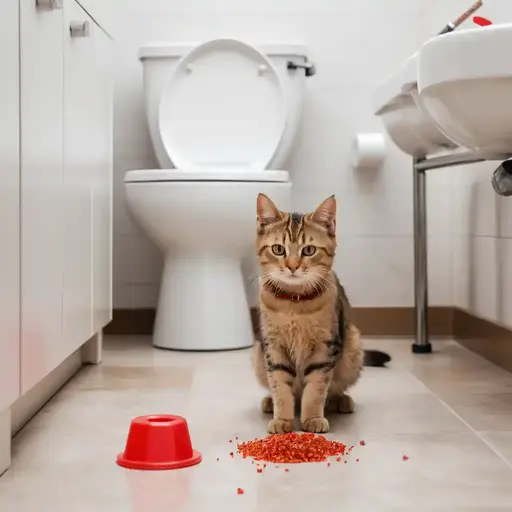
How to Cat Toilet Train: Step‑By‑Step Guide
A successful transition follows a slow, consistent progression. Below is a practical, numbered roadmap.
- Pick a Training System
- Commercial kits (CitiKitty, Litter Kwitter) come with adjustable seats and clear instructions.
- DIY option: Stack two shallow aluminum pans, cut a hole in the top pan, and place them over the toilet.
- Move the Litter Box to the Bathroom
- Over 10‑14 days, push the box a few inches each day until it sits directly above the toilet. This prevents sudden disorientation.
- Elevate the Box
- Use sturdy books, a step stool, or a purpose‑built platform to raise the box to toilet‑seat height. Ensure the platform is stable; a wobbling box will scare the cat.
- Place the Training Seat
- Secure the kit’s seat onto the toilet. Fill the seat with a thin layer of the cat’s regular litter.
- Phase 1 – Full Litter Seat
- Encourage the cat to jump onto the seat. Reward with treats each time it uses the seat. Keep the litter depth about ½ inch.
- Phase 2 – Small Hole
- Replace the solid seat with one that has a small circular opening (≈ 1 cm). The cat still has litter to stand on, but must balance slightly.
- Phase 3 – Gradual Hole Enlargement
- Every 5‑7 days, increase the hole diameter by ~1 cm while reducing the litter amount. Monitor the cat’s comfort; if it hesitates, slow the progression.
- Phase 4 – No Litter
- Once the hole is large enough for the cat to sit directly over the toilet bowl, stop adding litter entirely. The cat should now aim for the water surface.
- Final Transition
- Remove the training seat once the cat consistently uses the toilet. Keep the bathroom door open during the first few weeks to avoid accidental confinement.
Pro Tips
- Sprinkle a pinch of catnip on the seat during early phases to create a positive association.
- Use a non‑slip mat around the toilet base to prevent falls on the bathroom floor.
- Consistency is crucial—train at the same time each day (typically after meals).
Common Problems & Troubleshooting
Even with careful planning, hiccups happen. Here’s how to address them quickly.
- Cat refuses to jump onto the seat – Return to the previous phase (full litter seat) and add a favorite treat or a laser pointer play session near the toilet to entice movement.
- Accidents outside the bathroom – Re‑establish a litter box in a quiet corner for a week, then resume training. Frequent accidents often signal a rushed transition.
- Multi‑cat clashes – Assign each cat its bathroom or stagger training times. Use a pheromone diffuser (e.g., Feliway) to reduce territorial tension.
- Health concerns appear – If you notice blood in urine, straining, or a sudden change in appetite, stop training immediately and consult your veterinarian.
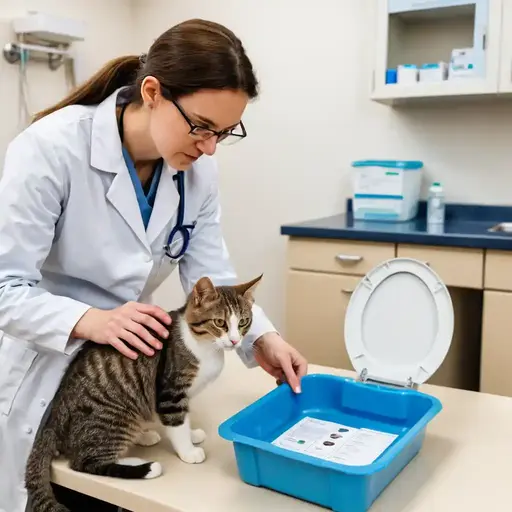
Monitoring Your Cat’s Health During Training
Because cat toilet training limits visual waste cues, adopt alternative monitoring strategies.
- Transparent Training Seat – Some kits offer a clear plastic version that lets you see urine color and stool consistency without removing the seat.
- Scheduled Vet Checks – Increase routine wellness exams to every six months while training, especially for senior cats.
- Hydration Tracker – Keep a water bowl near the toilet and note daily intake; reduced drinking can signal urinary issues.
- Weight Log – Weigh your cat weekly. Unexpected weight loss may indicate an underlying problem missed due to hidden waste.
Alternatives to Cat Toilet Training
If the drawbacks outweigh the perks for your cat, consider these modern solutions that preserve natural elimination behavior.
Self‑Cleaning Litter Boxes
- How it works: Sensors detect when the cat exits, then a rake scoops waste into a sealed cartridge.
- Pros: Minimal daily cleaning, odor control, retains digging instinct.
- Cons: Higher upfront cost ($300‑$500) and occasional mechanical glitches.
Biodegradable Litter
- Materials: Corn, wheat, recycled paper, or wood pellets.
- Pros: Compostable (in some jurisdictions), low dust, lighter to carry.
- Cons: May clump less effectively, can be pricier than clay.
Litter Box Enclosures
- Design: Furniture‑style boxes that hide the litter area behind doors or within cabinets.
- Pros: Reduces tracking, blends with home décor, and offers privacy for the cat.
- Cons: Requires floor space and regular deep cleaning.
Hybrid Systems
- Combine a semi‑automated sifter (manual rake) with biodegradable litter for a low‑tech, low‑maintenance option.
| Solution | Eco‑Score* | Convenience | Cost (initial) | Instinct Support |
|---|---|---|---|---|
| Self‑cleaning box | ★★ | ★★★ | ★★★★ | ★★ |
| Biodegradable litter | ★★★★★ | ★★ | ★★ | ★★★★★ |
| Enclosed box | ★★★ | ★★ | ★ | ★★★ |
| Cat toilet training | ★★★★★ | ★★★★★ | ★ | ★★ |
*Eco‑Score is a rough rating of environmental impact (5 = best).
When to Reconsider or Reverse Cat Toilet Training
Even after successful training, life changes may make cat toilet training impractical.
- New baby or frequent visitors: A busy bathroom can become stressful for a cat.
- Health setbacks: Arthritis flare‑ups or a recent surgery may limit climbing ability.
- Multiple cats added: Adding a new feline can destabilize the established routine.
Reversal steps
- Re‑introduce a litter box beside the toilet, using the cat’s favorite litter.
- Gradually move the box back to its original location over 7‑10 days.
- Reward the cat each time it uses the box with treats and gentle praise.
Patience and a calm environment are key; most cats readjust within two weeks.
FAQs
How long does cat toilet training usually take?
Most cats learn the full process in 4–6 weeks if you follow the phased approach. Younger cats often finish faster, while seniors may need extra time.
Can I use any type of litter in the training seat?
A clumping, low‑dust litter works best because it stays in place on the seat. Avoid heavy clay or silica litter, which can make the seat unstable.
Is cat toilet training safe for kittens?
Kittens older than 6 months can handle the height and balance required. Younger kittens may struggle with the elevation and risk of falls, so wait until they’re physically stable.
What if my cat stops using the toilet after a few months?
A regression often signals stress, a health issue, or a change in routine. Re‑evaluate the bathroom environment, check for medical problems, and consider adding a backup litter box while you troubleshoot.
Do I need to flush the waste after each use?
Yes—flushing after each elimination keeps the toilet clean and prevents odor buildup. If you’re concerned about water use, remember that a single flush uses only 1.6 gallons, far less than the water embedded in producing a pound of clay litter.
Conclusion
Cat toilet training can eliminate litter waste, save money, and simplify daily cleanup, but it also introduces safety, behavioral, and health‑monitoring challenges.
Evaluate your cat’s age, mobility, temperament, and any medical conditions before deciding. If you move forward, follow the gradual, reward‑based steps outlined above, and keep a backup litter box handy during the transition.
Whether you choose a toilet, a self‑cleaning box, or biodegradable litter, the ultimate goal is a happy, healthy cat—and a happier homeowner.





